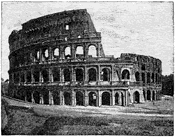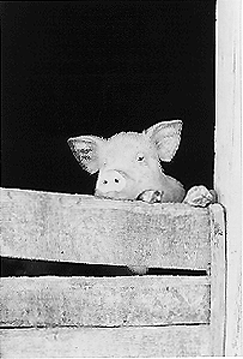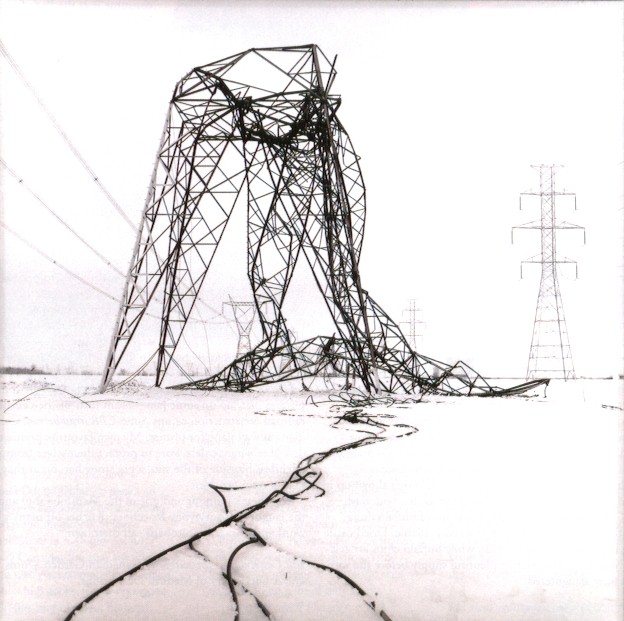 Structures
Structures Structures
Structures
Why Do Structures Fail?
Humpty Dumpty was obviously made of the wrong material. When he collapsed all the king's horses and all the king's men couldn't put him together again. But the egg shell is a wonderfully efficient, naturally occurring thin structure that is extremely strong but only when the load is evenly distributed on it. One type of load which a thin shell cannot resist is a sharp point load. Thus, when Humpty fell to the ground he loaded his wonderful structure in a way that caused a strength and system failure.
Another wonderful structural tale is the "Three Little Pigs." Each pig used different building materials. Two of the pigs built their houses from inferior building materials. Straw and twigs didn't stand up to the typhoon onslaught brought on by all the huffing and puffing of the Big, Bad Wolf. However, the third pig's brick house managed to remain standing and eventually the Big, Bad Wolf had to resort to other measures to catch the pig. Structural failure occurs because of forces acting on the structure. These can be static forces (stationary forces) due to the structure's own weight or the load that it is carrying, OR dynamic forces (moving forces) produced by the wind, sea, vehicles, people, etc.
In the story of the Three Little Pigs the force that acted on the houses was a dynamic force. In this case the force was a fierce wind. However, if the force that had acted on the houses was another type of dynamic force, say an earthquake, the brick house would have been the worst structure to live in. In fact, an unreinforced masonry building is much more life threatening in an earthquake when compared to a straw hut. When designing structures it is very important to consider what types of forces will act on each and every structure depending on use and location. Every one is different!
Building any structure carries with it an element of risk. Building Codes are written to help establish a standard which structures must meet. The penalties for failing to meet codes have been around for thousands of years. The Code of Hammurabi was written about 2200BC. It has been translated:
Assignment:
Why Structures Fail?
A two part assignment
Find an instance where a structure failed. What failed? Why did it fail? Was the failure due to limitations of human understanding? or was it due to human error or negligence? or perhaps due to greed? Was the failure due to an unexpected load?
Conduct the following experiment. Take ten small paper clips. Twist each one back and forth and count the number of turns that it takes for each paper clip to fail. Note the variance in what seems to be exactly the same material for each one. What role does statistics play in structural design?
Complete both parts of the assignment and hand them in.
![]()
 From time to time something goes wrong with a design and a structure collapses or fails to do its job. Some of our favorite fairy tales and folk tales inform us of structural strength and system stability. Some warn us of the impending danger of building with the wrong materials.
From time to time something goes wrong with a design and a structure collapses or fails to do its job. Some of our favorite fairy tales and folk tales inform us of structural strength and system stability. Some warn us of the impending danger of building with the wrong materials.
 The story teaches children that a brick building is the strongest and most stable because it is the only one which could resist the huffing and puffing. The straw and stick buildings were blown away in the wind and only within the brick structure did the pigs find their security.
The story teaches children that a brick building is the strongest and most stable because it is the only one which could resist the huffing and puffing. The straw and stick buildings were blown away in the wind and only within the brick structure did the pigs find their security.
 Petroski notes: "The Concept of Failure is central to understanding engineering, it has as its first and foremost objective the obviation of failure. Design, even structural design, is a human endeavor and thus it is subject to error. Due to this, some designs are destined to fail. This can lead to a loss of life which in itself is tragic, but a deeper unforgivable tragedy exists when the lessons of the failure are understood and allowed to occur again."
Petroski notes: "The Concept of Failure is central to understanding engineering, it has as its first and foremost objective the obviation of failure. Design, even structural design, is a human endeavor and thus it is subject to error. Due to this, some designs are destined to fail. This can lead to a loss of life which in itself is tragic, but a deeper unforgivable tragedy exists when the lessons of the failure are understood and allowed to occur again."
![]()
| Notes and Assignments | Project Requirements
Project Overview | Design Process | Design Report | Design Portfolio |
Getting Started |